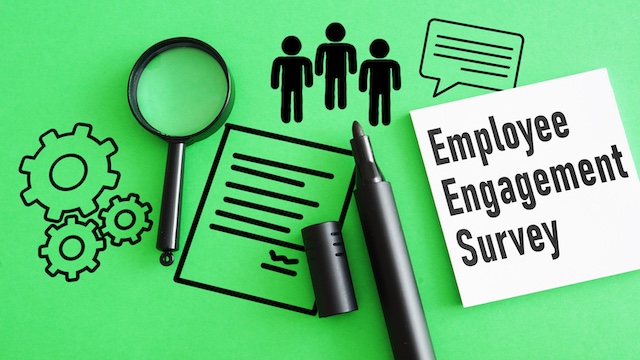This article, originally published on December 4, 2019, has been updated.
Even with the surge in demand for healthcare professionals during COVID-19, the decline in financial resources led to layoffs throughout the industry. While in some cases these layoffs have since declined, in others, large organizations continue to face the financial repercussions of the pandemic and see restructuring or reducing staff as their only solution to cost-cutting.
As an HR professional, you face a unique challenge when it comes to healthcare layoffs. Even while reducing parts of your workforce, you need to preserve your organization’s employer brand so that you can still attract coveted talent.
Preparing for healthcare layoffs requires balancing a number of important concerns, such as retaining key employees, forestalling wrongful termination lawsuits, and protecting employer brand. Here is what HR managers need to know when conducting healthcare layoffs.
Assess the needs of your healthcare organization
According to Becker’s Hospital Review, “Hospital officials need to be able to explain why each and every layoff is necessary.” A clear justification will help employees understand the need for the layoffs and reassure them that current issues will be addressed through the layoff.
When conducting healthcare layoffs, consider which parts of the organization are expected to grow, and which are shrinking or getting eliminated. Once you figure out your organization’s projected needs, you will be in a better position to decide which employees should be retained, and which can be let go. SHRM offers several criteria to consider when making your selections, including seniority, employee status, and merit. Using these criteria, you can create a layoff list that best benefits your organization.
Prepare severance packages and outplacement services
Healthcare layoffs can have a major effect on your organization’s brand reputation. In fact, 66% of people who have had poor layoff experiences share that negative perception with others, according to INTOO’s Employer Branding Study. These shared perceptions on social media and Glassdoor can have a strong negative impact on your ability to attract and hire candidates you need.
This is why it’s important to do all you can to make sure laid-off employees leave your organization with as positive an impression as possible. Severance packages that support affected employees through a career transition are very useful in this regard. A severance package usually includes severance pay, continuation of health benefits, and outplacement services, as well as other benefits specific to an organization and employee’s situation.
Outplacement consists of career transition assistance such as career coaching and resume review, which help exiting employees find new jobs more quickly and easily. Employers concerned about brand management often provide outplacement services to departing employees. Beyond allowing companies to reduce the cost of unemployment claims and protect brand reputation, outplacement programs also allow for a more positive offboarding experience for the exiting employee. While employees are rarely happy about being laid off, they are more likely to feel their company still does value them and care about their well-being if they’re provided with honest business reasons as to why the layoff is taking place, and given practical assistance with making the next step in their careers. The Employer Branding Study found that employees who were given outplacement or career assistance following a layoff were 38% less likely to harbor a negative perception of their former employer.
Practice compassionate offboarding during healthcare layoff meetings
Once you have finalized your layoff list and prepared severance packages, you are ready to conduct layoff meetings. INTOO’s layoff notification guide outlines best practices and pointers that benefit all parties during this transition, complete with a pre-notification checklist, tips on how to address emotional reactions and difficult questions from employees, and a sample script that exemplifies the ideal message, tone, and pace of the meeting. Following these tips can make the difference between a disastrous or even physically dangerous layoff notification meeting and a more cordial one where all parties feel respected and heard.
Making the time and effort to treat people with care and dignity during layoffs will make it easier for your organization to preserve its employer brand. In addition, parting on a positive note will allow you to continue relationships with your former employees, whether as a client, patient, reference, referral, or even boomerang employee. INTOO’s webinar on compassionate offboarding provides details on what materials to gather for a layoff notification and how to prepare for the in-person meeting, in addition to information on specific tools and services for supporting both the employee and the brand.
Communicate layoffs to your retained healthcare workforce
Your retained employees will likely have to make many adjustments after healthcare layoffs. Some may need to take on additional responsibilities, and others may need new training to perform tasks they were not originally hired for. Since the retained employees are the people who will play a key role in the organization’s future success, it’s imperative to communicate layoffs to your retained employees and take steps to manage this relationship. Hold meetings with your employees to share details about the layoff itself, answer questions, and clarify any changes in duties.
Prepare for changing healthcare industry needs
The healthcare sector is going through a tremendous amount of change due to technology. Telemedicine—health-related services and advice provided remotely through video or chat—grew tremendously during the pandemic, when patients were unable to visit a doctor’s office. Other uses of technology, such as AI (artificial intelligence), automation, and new surgical tools are also going to change the healthcare industry.
As an HR professional, you will need to keep an eye on these changes so that you can make speedy adjustments to your workforce as needed, whether by providing new educational opportunities to the existing workforce or hiring new talent with needed skills. Healthcare layoffs can pose a challenge for organizations concerned about their reputation, but providing outplacement can help protect your employer brand. INTOO’s outplacement solution offers unlimited, on-demand, one-on-one career coaching to employees in career transition, along with expert resume reviews, video interview coaching, and a suite of other workshops, tools and services. Learn more about how INTOO’s outplacement solution can help support your organization during a restructuring.
Robyn Kern is a seasoned business writer who has written in the HR, education, technology, and nonprofit spaces. She writes about topics including outplacement, layoffs, career development, internal mobility, candidate experience, succession planning, talent acquisition, and more, with the goal of surfacing workforce trends and educating the HR community on these key topics. Her work has been featured on hrforhr.org and trainingindustry.com.











